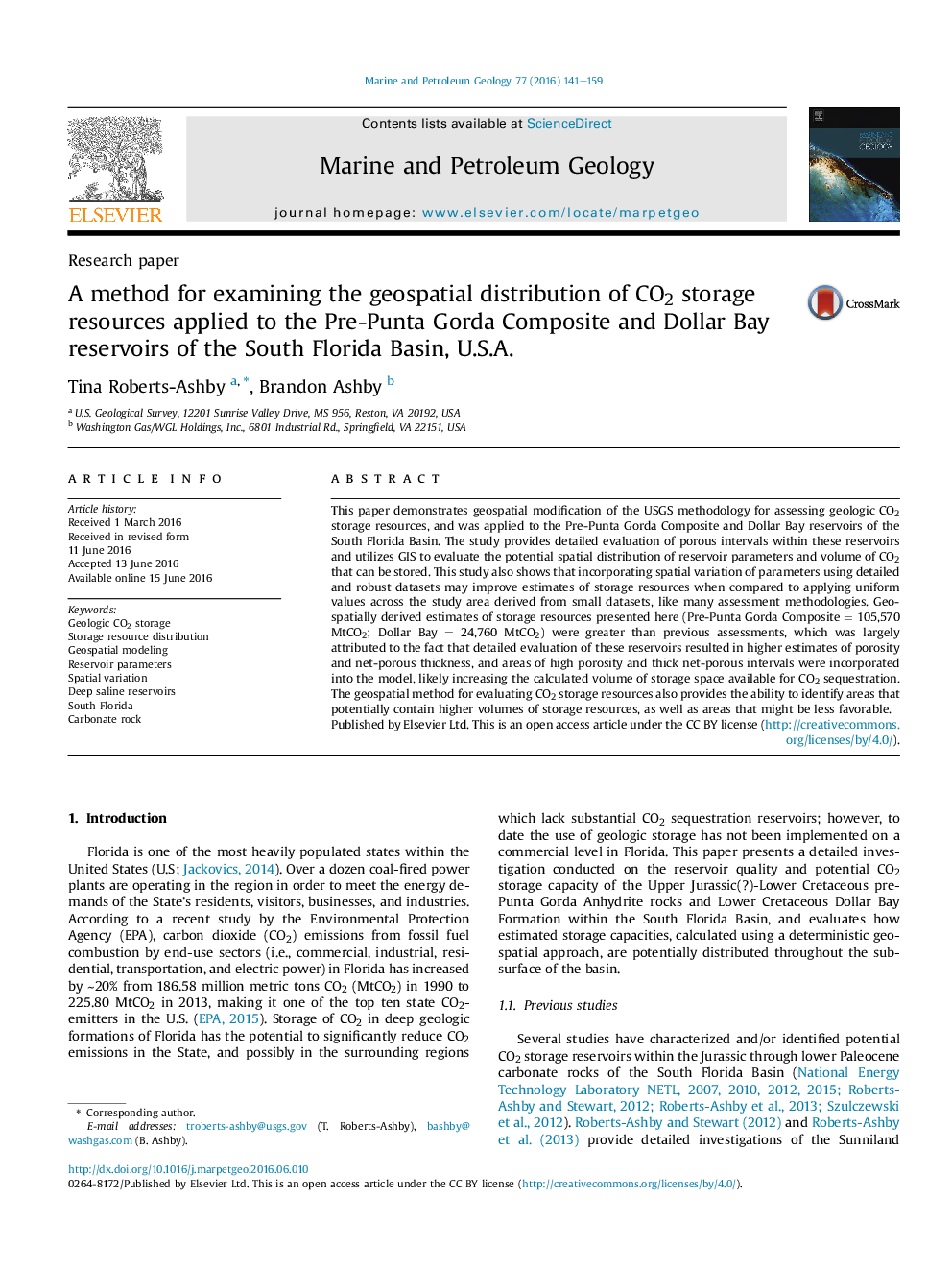| کد مقاله | کد نشریه | سال انتشار | مقاله انگلیسی | نسخه تمام متن |
|---|---|---|---|---|
| 6434537 | 1637150 | 2016 | 19 صفحه PDF | دانلود رایگان |

- Shows deterministic geospatial method to estimate CO2 storage and spatial variation.
- Detailed and robust datasets improve estimates of storage resources.
- Including spatial variability in reservoir parameters improves storage estimates.
- Geospatial modification to USGS methodology for assessing CO2 storage resources.
This paper demonstrates geospatial modification of the USGS methodology for assessing geologic CO2 storage resources, and was applied to the Pre-Punta Gorda Composite and Dollar Bay reservoirs of the South Florida Basin. The study provides detailed evaluation of porous intervals within these reservoirs and utilizes GIS to evaluate the potential spatial distribution of reservoir parameters and volume of CO2 that can be stored. This study also shows that incorporating spatial variation of parameters using detailed and robust datasets may improve estimates of storage resources when compared to applying uniform values across the study area derived from small datasets, like many assessment methodologies. Geospatially derived estimates of storage resources presented here (Pre-Punta Gorda Composite = 105,570 MtCO2; Dollar Bay = 24,760 MtCO2) were greater than previous assessments, which was largely attributed to the fact that detailed evaluation of these reservoirs resulted in higher estimates of porosity and net-porous thickness, and areas of high porosity and thick net-porous intervals were incorporated into the model, likely increasing the calculated volume of storage space available for CO2 sequestration. The geospatial method for evaluating CO2 storage resources also provides the ability to identify areas that potentially contain higher volumes of storage resources, as well as areas that might be less favorable.
Journal: Marine and Petroleum Geology - Volume 77, November 2016, Pages 141-159